In this article we discuss free CAD software for makers.
In this article we first talk about the criteria that are important for us when it comes to a free CAD software and then talk about some of the software solutions we are using and their advantages and challenges. At the end we will talk about what software we use for 3D printing, woodworking, laser cutting, and other tasks.
Free CAD criteria
Let’s look at the criteria that we will use in the second part to judge the different
solutions.
Is the software a 2d or a 3d system?
The first any maybe most important difference
between CAD systems is if you are looking for a 2d model that could serve as a template
to transfer to your material or that would enable you to create shapes for a lasercutter
or a vinyl plotter – so everything where we have no thickness but only 2 dimensions.
If 2 dimensions are not enough you are looking for a system that can model things in three
dimensions so you can plan a woodworking project or create a shape for 3D printing.
Does the software support the design of single parts in a good way?
If you work with a 3D program some are better designing a single parts.
For CNC work or 3dprinting you will most of the time be focused on an individual part
and have less of a focus on the connection between a lot of individual pieces.
Does the software support the design of multi part assemblies in a good way?
In woodworking most of the time you will work with projects that have a lot of parts. This table is a multi part object as it consists of 4 legs and a tabletop. Overall it contains
several objects that are positioned relative to one another. We will see that some CAD systems are better or worse in the assembly of several parts.
Does the software offer parametric designs?
An important question is if your software is able to create a parametric design. If you design a table in a non-parametric software and decrease the size of the table top you have to manually adjust the table legs. In a parametric software the position of the legs will automatically be adjusted as they reference the edge of the table rather than an absolute length.
Does the software support artistic sculpting?
In the examples so far we looked at shapes that are square and based on precisely measured objects. You want to have a look at a different kind of software if you plan to get creative and work with organic, sculpted shapes.
Does it output CAM?
After creating a model we want to do something with it. If you designed something for the CNC you want to create gcode that the CNC can execute to cut out the shape you designed. This is called CAM. Some software solutions have a CAM integrated – others don’t.
Does it support drawings and cutlists?
For traditional furniture it is important to have a good drawing and ideally a cutlist that helps you to cut everything to the right dimension.
Is the software free?
All the software I talk about in this video don’t cost you any money. There is however an important difference. Some of the solutions are free to use as long as the vendor of the software thinks it’s more beneficial to hook a lot of new users to its solution rather than getting money from those that are already using it. This could however change every day.
Other solutions are open source software where you do not only get a CAD system but also the source code – so to say the assembly instructions for the software and you will always be able to use it.
Free CAD software solutions
Now let’s get started and look at the software that we are using and solutions that we are using less or not at all. In the following picture you can find a quick overview of the strengths and weaknesses of the solutions:
Inkscape
For 2d work we create nearly all projects in the free and open source software Inkscape.
It is similar to Illustrator so you can draw simple shapes but also get very artistic and design organic shapes – such as the patterns for the living cell table design.
Besides templates Inkscape can also produce shapes for a a lasercutter or a CNC machine and it even includes a simple CAM solution that can create gcode.
Inkscape is our go-to, five start rated solution for everything in two dimensions.
The only disadvantage of Inkscape is that it is not parametric and not able to easily produce measured drawings. If measured 2d drawings and parametric design are important for you you might want to look at LibreCAD. It’s a great open source 2d CAD program. However when a project requires a parametric 2d shape you can create it also in a 3d CAD program.
Therefore we use LibreCAD very seldomly and excluded it from the list.
Blender
The next software on our list is Blender. Blender is a super powerful 3D modeling and animation open source software. You can create entire short films in Blender and we use Blender
to edit our videos.
Blender is a perfect solution if you want to sculpt a model or if you want to modify a file before 3D printing it. While it is excellent for creative modeling Blender is not parametric and while you can use it out of the box for traditional CAD work it is a bit cumbersome. It also doesn’t offer technical drawings but what you can do is to import your models from another CAD software and create a photorealistic rendering in Blender. While there are a few CAM addons for Blender none of them seems to be actively developed and maintained.
Sketchup
For a long time Sketchup was our go-to solution for 3D modeling. It is a great solution especially for complex assemblies with a lot of parts. Another great feature is that while the drawings are mediocre with an addon you can create a cutlist that is very handy for woodworking projects. We stopped using Sketchup for a couple of reasons:
First the vendor of Sketchup, Trimble, offers the new version only on the web – which means that they can limit the access easily – in contrast to the old version that would run
forever on your local computer.
Secondly the ruby scripts such as the cutlist addon mentioned before no longer work in the web version. You can still add drawings but the lack of the cutlist addon is really bad news for all woodworkers.
Thirdly Sketchup is not parametric and the free version is missing some critical features such as Boolean operations that make it very hard to use it for single shape 3D printing
models or any sculpting work.
So for our use cases Sketchup is inferior to Fusion 360 in all relevant dimensions.
The same is by the way true for Onshape. Onshape doesn’t allow commercial use of the models and automatically publishes them as public domain models. With a feature set similar to Fusion and a very restrictive license it’s not an option.
Fusion 360
Which brings us to the next solution on the list: Fusion 360. Fusion is perfect and comes with all the features you ever wanted. It is parametric, has an easy user interface, allows for sculpting, creates CAM paths for your CNC and can create renderings as well as technical drawing.
So why bother about any other “free” CAD solution? Well it’s this one sentence in the Fusion license terms: It’s vendor can change the license at any point in time. … and afterwards can charge any amount of money.
Now you might argue that it is pure paranoia. Why would a respected company such as Autodesk offer a solution for free, build up a community, invest in the product just to discontinue
it or charge money for it?
The reason is pretty simple. They are driven by shareholder value. If a solution – such as 123d Catch, which used to be another free Autodesk software doesn’t contribute to the companies profit targets it will no longer be offered for free. If you feel uncomfortable with putting all your eggs in one basket given that the rent for this basket might be a few hundred bucks going forward have a look at FreeCAD.
FreeCAD
As Blender and Inkscape, FreeCAD is open source software — so a true “free” CAD solution (free as in freedom – not as in free beer). That means you can download and modify the source code of the software. Even if the website closes down you will always be able to use the software and adopt it to your needs.
FreeCAD is still under heavy development but it comes with a fully parametric design system and is able to create gcode as well as technical drawings. While FreeCAD was at the publishing of this article a bit clumsy when it comes to multipart assemblies a lot has changed and I published a post on FreeCAD for woodworkers and a detailed instruction on multi-part assemblies.
It might be more difficult to get used to the software but for us the benefit of using an open source solution easily outweighs the more difficult learning curve.
The last tool on the list is a bit of a niche solution. With OpenScad you create your model with a simple programming language. The software is too complicated for multipart assemblies, doesn’t allow sculpting and it’s difficult to create a technical drawing. We mainly use it to create models that need complex parameters like these voronoi vent covers and to create
parametric models for Thingiverse.
Free CAD software we use
Which brings us to the last section: When do we use which software?
2d drawings
When we draw something we usually use Inkscape. It’s easy to draw for example the shape of this Klingon pushstick design. We also use Inkscape to send designs directly to the vinyl cutter.
Laser cutting
For the laser cutter we only needs a free 2d CAD solution. Most of the time we create SVG files as this tool holder in Inkscape and send the SVG files with K40Whisperer to the laser.
When a lot of parts have to fit on a single sheet we use the open source software deepnest.io to arrange the parts in a space saving way.
When the measurements for a 2d design are complex as for this coin sorter we create the drawings in FreeCAD and export the DXF to K40Whisperer.
3d printing
When a 3D printed design such as this router jig needs to be configured with a lot of parameters we create it in OpenScad to make it easier for people to configure their own version on Thingiverse.
When a 3d printing project doesn’t need to be configured online we use FreeCAD. There honestly wasn’t a project on our list that FreeCAD would not be able to handle when it comes to the design of 3D prints.
For creating or modifying STLs from Thingiverse or other sources Blender is the most convenient tool. It is easy to cut away part of the model, merge several models together or modify the mesh.
CNC
For the CNC we also moved from Fusion 360 to FreeCAD. We are not experts on the CNC and while using Fusion never managed to wrap our heads around the more complex options of adaptive paths and all the other advanced CAM features.
A real expert on the CNC most likely doesn’t want to use the FreeCAD CAM module due to the lack of features. For us this lack of features is actually an advantage as it means we have less possibilities to mess things up.
Woodworking
For woodworking and metalworking projects choosing the right free CAD solution is quite difficult.
We have some of our old models still in Sketchup and it’s cumbersome to work with a non-parametric system once you got the experience of working parametric.
We did some models in Fusion and are missing the the possibility to create a cutlist. FreeCAD has some possibilities to create a bill of material – which is a very good starting point to create a cutlist in another software such as cut micro.
Arranging several parts in FreeCAD is either simple or parametric. Moving parts in FreeCAD is easy but these connections are not parametric. There is a possibility for parametric assemblies but it’s quite complicated as each part has to be saved in an individual file – which is especially for woodworking projects where most parts are simple boards not practical.
The great thing about open source software is that everyone can improve the software.
So on GitHub you can find a modified version of FreeCAD that actually offers a quite powerful parametric assembly. As soon as this feature is stable FreeCAD should be able to provide everything you need to model furniture. Till then we will have to work with assembly options rather on the level of Sketchup than what Fusion 360 is offering.
Update (May 2019): Since the article has been published FreeCAD advanced quite a bit and I wrote a few workaround scripts that make woodworking with FreeCAD much more enjoyable.
This approach is described in this article.
This was a quick overview of the free CAD software we are using. It’s a very subjective listing and most likely your personal preferences are different. Are we missing something? What software do you use? Let us know in the comments.

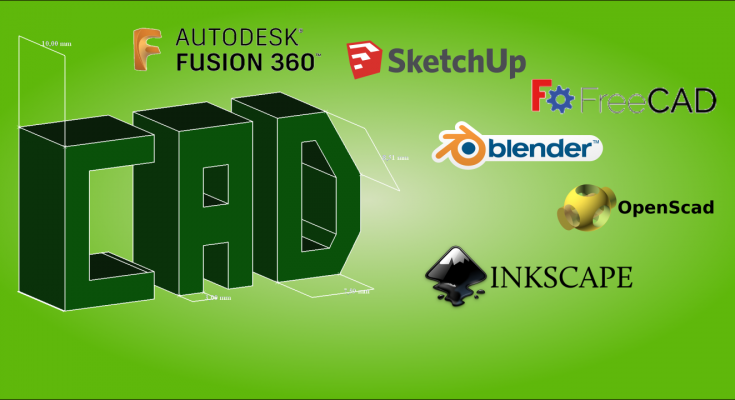

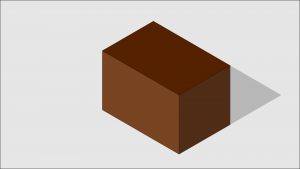
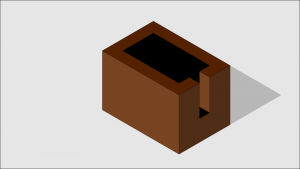
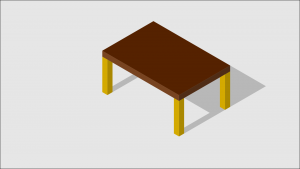
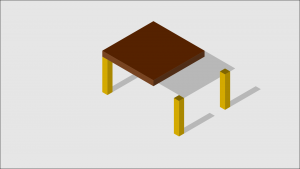
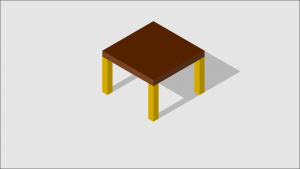
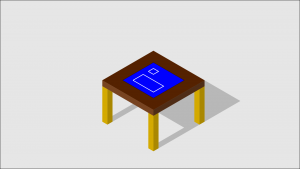
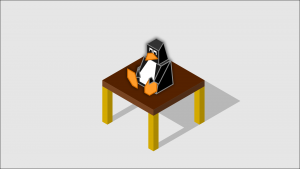
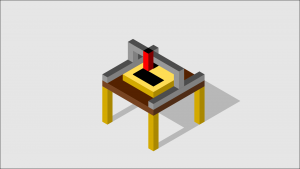
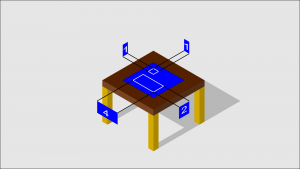
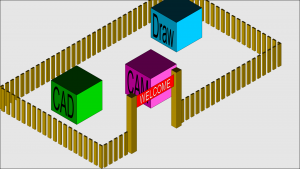
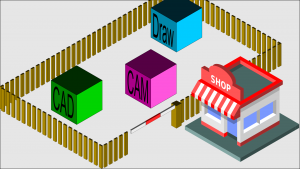
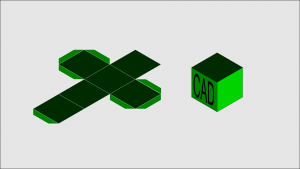
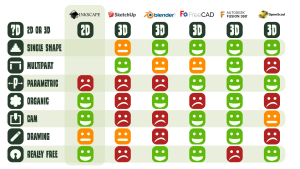
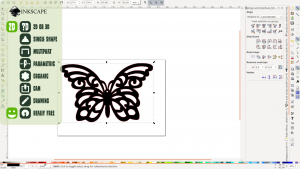
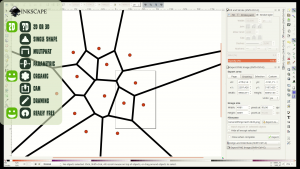
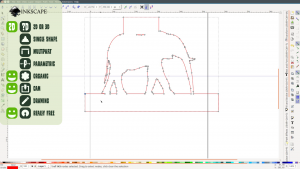
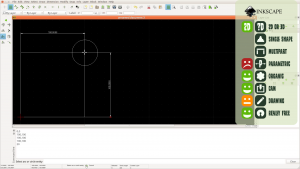
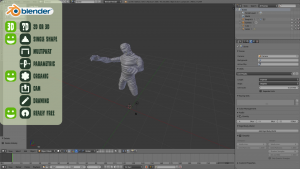
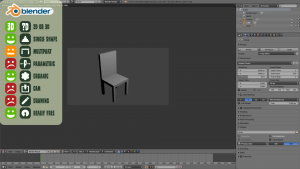
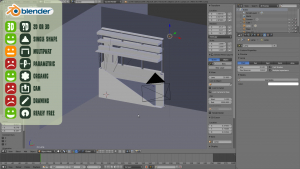
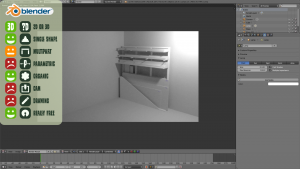
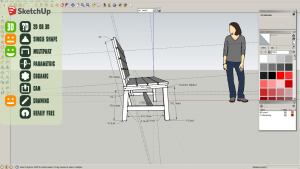
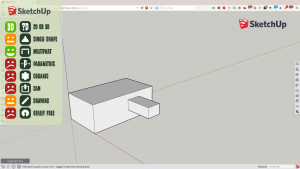
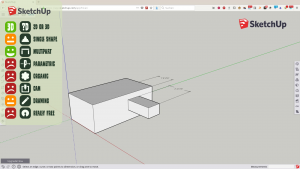
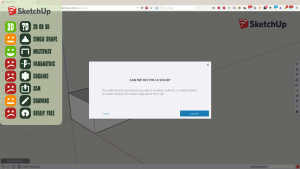
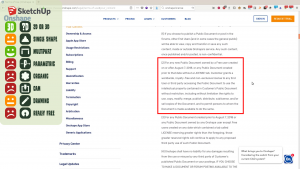
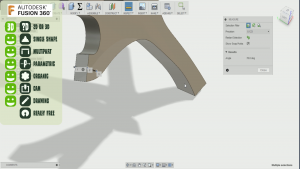
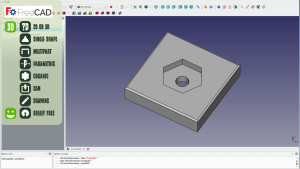
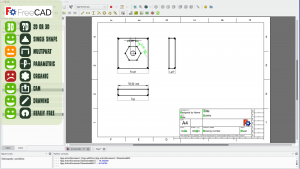
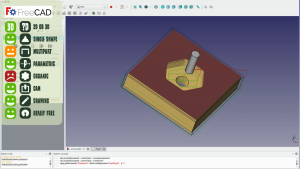
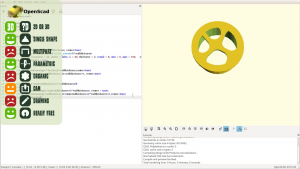
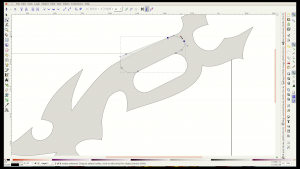
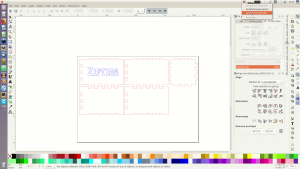
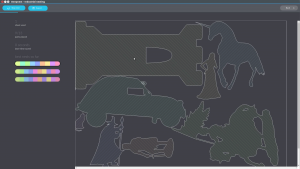
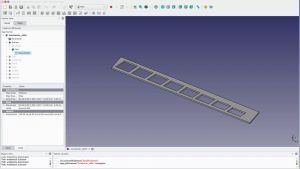
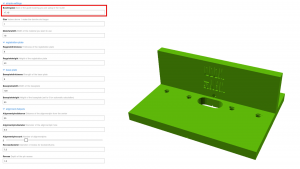
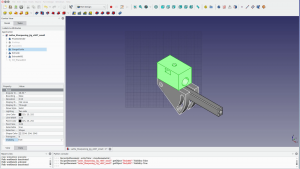
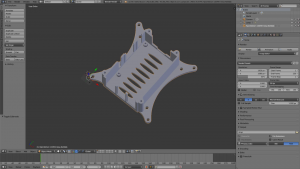
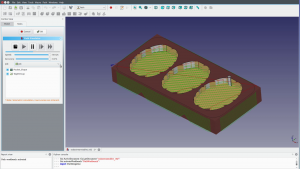
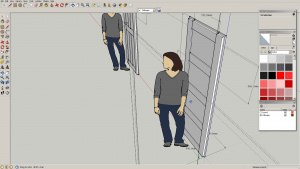
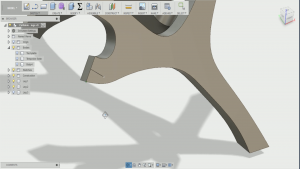
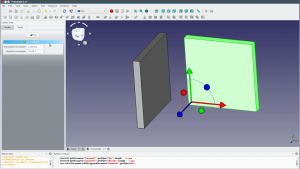
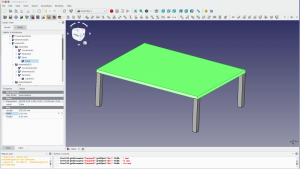
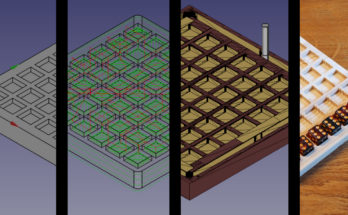


I just want a free CAD program that will allow me to draw a 36″ x 24″ x 36″ rectangular solid. I’ve already downloaded 4 and none will allow me to do that. Sketchup is worse than useless to me and I don’t have money, so buying an application is out of the question.
Why! with all the woodworkers in the world and all the computers in the world, has no one come up with a CAD program that is woodworker friendly?
As woodworkers we are a small customer group.
But creating a solid is really simple in FreeCAD. Just open the program, select the part workbench and click on the cube icon.
Change the dimensions in the parameter panel and you are done.
love your coment
I am new to all of this so I’m researching .I have been making things as far back as I can remember. sometimes for fun , sometimes out of necessity. My Family was never wealthy but we were creative and had what we needed because we could make it ourselves. Back in my renting days when I moved about quite a lot, my furniture never seemed to fit right for the way I wanted to decorate. I didn’t have a lot of money to spend so I would customize the furniture myself to achieve the right balance of function, mood and harmony . I’ve always been eager to learn nearly every type of craft ,molding fabric, wood, and metal, when I’m admireing something I like I’m actually reverse engineering it in my mind I learned by trial and error never having formal training except Interior Design course I took by mail order. I had always thought about a cad program but never had the opportunity to work with one. I learned simple drafting by hand and didnt own a computer in those days. It would sure save me a lot of time (and wood since it is so expensive now) so here I’am with my always curious mind that believes I should be able to make anything I can imagine.
I wish you all the best on your journey!
We are working on a set of step by step tutorials on using FreeCAD for Woodworking. Have a look.
Forgot the best one: SolveSpace. The only one I bother using.
Looks like an interesting solution.
Could you say more about what you like about it?
How do you get this software?
Download it Here
LOOKING FORWARD FOR A SOFTWARE THAT CAN HANDLE WOOD DESIGN ART IN AFRICA
REGARDS
Have a look at blender …
I am also a propenent of Open Source solutions. I have recently begun learning to use FreeCad for my woodworking projects, and I appreciate the tutorials you have provided here. Thanks!
FreeCAD is a great solution. With a bit of tweaking it’s very well suited for woodworking projects.
Loved the video “free-cad-software-for-makers”. Very informative. Thank you for taking the time to help us new people out here.
I am wanting to design small wooden boxes for some of my electronic hobby circuit boards. Finding a wood/plastic box that is exactly the right size, typically 3 inches to a foot in size, is nearly impossible. So I looked into a cheap CNC machine to make wooden boxes. Really, 6 flat objects with holes in the right places to put together to make a box. Starting the search was a bit overwhelming. Your video really shed a lot of light onto what I need. I think Inkscape might be just what I need. Any recommendations on a small CNC machine that will work well with thin wood and Inkscape? Thanks again
Have a look at my articles about the K40 laser cutter. It’s the best way to cut acrylic or thin wood.
There are some easy to use box makers that provide you with a ready to cut file: This is the box maker I use.
Freecad is a parametric 3d modeller. I use it for making mechanic objects.
I’ve found FreeCAD to be as powerful as the costy packages out there, and it’s open source. I can compile it and add in plugins as well. it’s too powerful to be easy.
I’ve designed very complex gear systems after only a couple of days of playing. I now design things, export to stl files, and then 3d printed them. Such freedom!
Fusion 360 is also good and affordable but not free and permanently changing price policy – but it is really beginner friendly.
An Interesting Article about CAD Programs: https://www.xp-pen.com/forum-6119.html
CADHOBBY IntelliCAD has exceeded my expectations in terms of its features and ease of use. I highly recommend it to any hobbyist looking for CAD software that delivers great results.
https://www.cadhobby.com/
Sounds like FreeCAD “will become” the tool of choice for hobbyist / home woodworkers, but for now it sounds like it is still slightly immature.
In the meantime Fusion 360 sounds like the best option for our projects but it could disappear under our feet at any time.
This blog article is quite old in software terms. In the meantime most of the downsides of Fusion360 have become a reality and FreeCAD has matured quite a bit.
I would use FreeCAD anytime over Fusion.